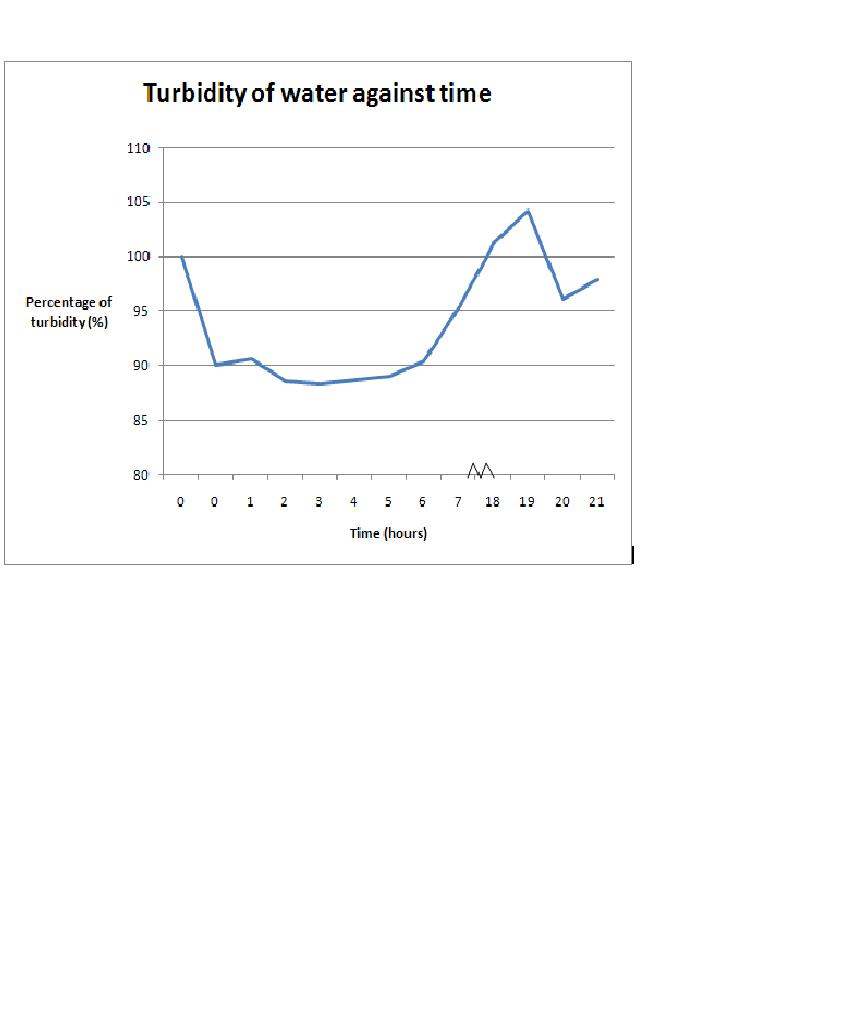Overview of filtration rate experiment
Introduction
As there is an increase in demand of developing an effective biomonitoring system (Daby, 2006; Khristoforova et al, 2007; He´douin et al, 2006), there is a need in gaining a better understanding of the biological filtration rates of bivalves. Biomonitoring systems have been implemented to several parts of the world and is constantly used to assess the health of marine animals and water quality (Daby, 2006; Hédouin et al, 2010). The Pacific Toothed Oyster, Isognomon isognomon has been deemed to be among the more effective species to be used for the biomonitoring program (Daby, 2006; Hédouin et al, 2010). This is due to its ability to persist in a wide range of habitat, high abundance and high bioconcentration potential as well as having a history of successful utilization as part of the biomonitoring program (Daby, 2006). By using the biomonitors, there was a gained benefit by reducing the need to constantly collect water samples over a long period of time. Additionally, there would be lower rate of error gained as chemicals and heavy metals will build up in the body tissues of the bivalve (Hédouin et al, 2010; Daby, 2006).
Despite all the benefit gained, there was still a need to sacrifice individuals to gain tissue samples for data collection. Though this species is not endangered in any manner, given a choice to decrease sacrifices for data collection would always be preferred. On top of that, there were no experiments to show the differences of results accuracy between conventional methods of human performed data collection against biomonitoring methods. In this experiment, a simple filtration rate will be tested to gain a better understanding of the percentage materials in water that will be enveloped by these bivalves over a period of time. On top of that, it will also allow us to gain a better insight of how long will it be needed for these bivalves to filter materials in the water as well as learning if turbidity of water can be altered given the right amount of individuals. For this experiment, it was hypothesized that water turbidity will keep decreasing over a period of time as materials in water will be filtered and retained in the tissues of the bivalves.
Methods
In this experiment, 15 individual subjects were placed in a container holding 15 liters of filtered sea water. After placing the individuals in, water samples were taken straight away to be used as a control. After collecting the control water sample, 6 ml of microalgae solution was added and another water sample was taken. Consequently, water samples were taken up to 11 times. The first 7 water samples were taken at every one hour interval after the experiment was set up; whereas the following water samples were taken 11 hours later. Finally, 3 water samples were collected at each hour interval following the previous collection of water samples. Every collection of water samples were placed in test tubes and kept in a -4°C environment to prevent any build up unwanted material. The entire set up experiment was left in an open environment which experienced temperatures between 20-24 °C to simulate a natural occurring environment. Once data collection was done, all water samples were placed in a spectrophotometer to gain data collection with regards to the percentage of water turbidity.
Results & Discussion
The results of the experiment was confounding, with unexplained variables detected during the data analysis. The result are as shown:-
 
Graph showing the variability of turbidity percentage in the water over a period of time. First 2 water samples were controls used for comparison purposes. The first water sample is filtered sea water (expected to be clearest) and second water sample consists of 6ml of microalgae solution (expected to be the most turbid). Eventual samples are for data analysis purposes over the duration of time.
As the results show, the initial hypothesis was rejected. For the first 6 hours, water became more turbid than expected. Between the 7th hour to the 19th hour, turbidity of water started to decrease; however, it was unexpectedly clearer than the first water sample that was thought to be the clearest. Additionally, after the 19th hour, there were unexpected fluctuations again. It was shown in this result that the fluctuation of water turbidity is extreme and results were confounding.
As the results suggest, collection of water sample over a period of time for monitoring marine water cleanliness may not be highly recommended as there were thought to have high variables that are too stochastic to be taken into account. Using this experiment for an example, on the surface of the bivalves, there were communities of invertebrates and algae that settled on it. These communities may have altered the result of this experiment; however, further investigation will be needed to determine such hypothesis. Additionally, there were no previous reports over this event. A further understanding and learning of these settled communities on the shell surface may be important for future implication as biomonitors as there may be symbiotic or parasitic possibilities that may affect its effectiveness to filter materials. Another unknown variable in this experiment is if the filtered water that leaves that cavity of the bivalves are meant to be clearer or does it carry other form of substances from the body such as excretion. Similar to the first case scenario, there was no concrete experiment or research that shows such possibilities. Understanding of the physiology and ecology of the Pacific Toothed Oyster can be vital for future research and understanding. At this current stage, this species of bivalves are much understudied other than for biomonitoring purposes. The physiology and ecology that occurs on and around this species is very poorly understood and may well be a limitation for future implication as biomonitors. |